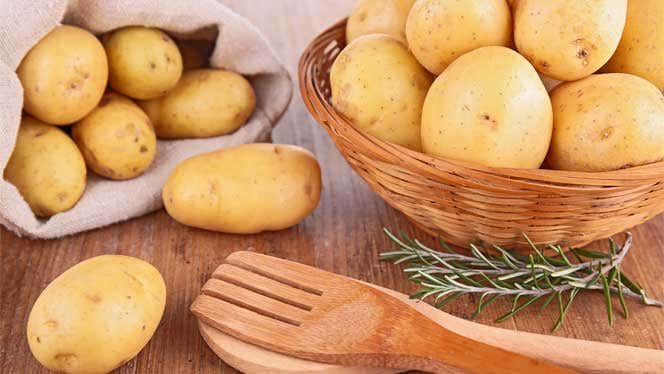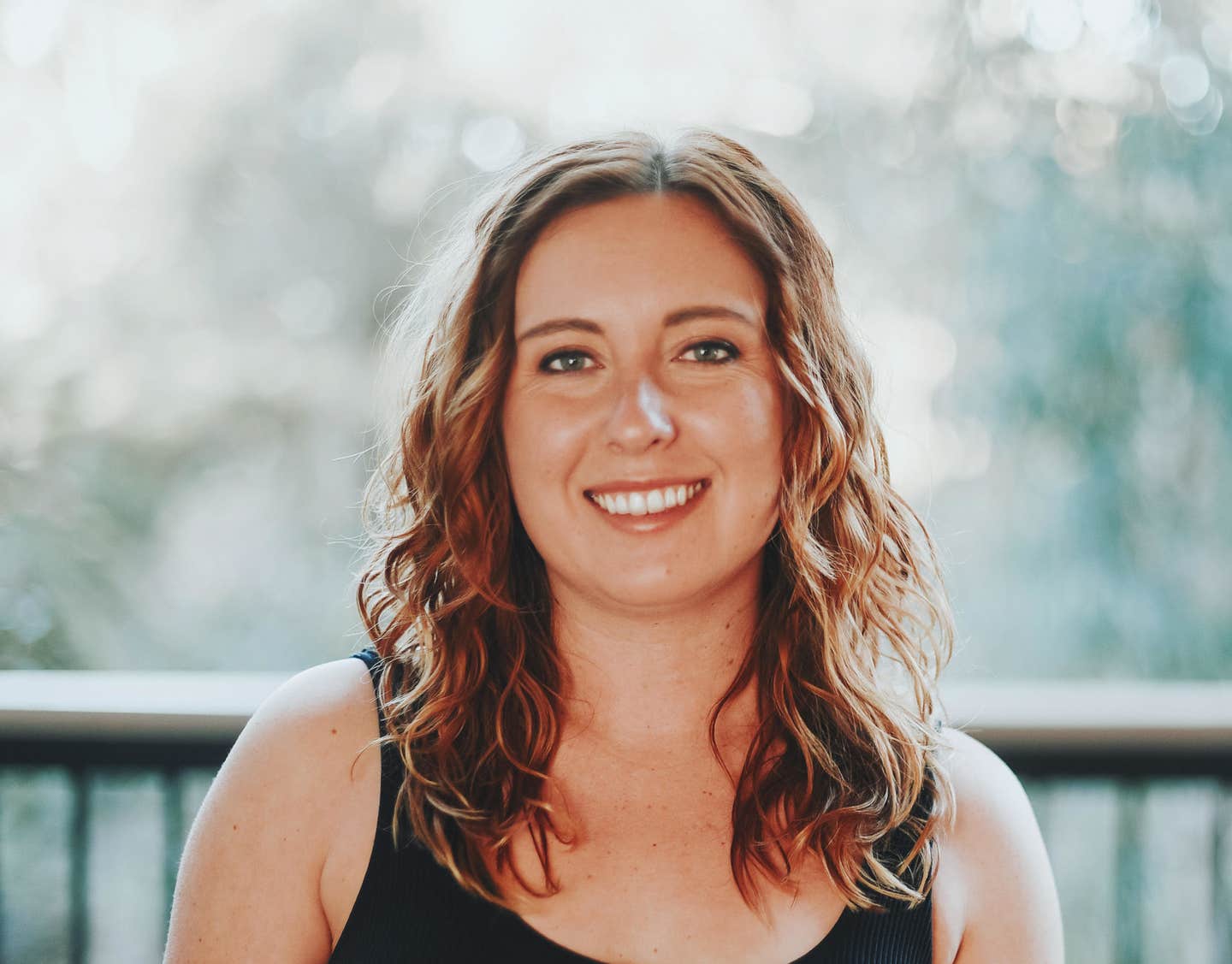
Are Potatoes Good For You? Everything You Need to Know About Starchy Vegetables
By Megan Edwards,
Last Updated:The average American consumes nearly 50 pounds of potatoes per year, making it the most popular vegetable in the United States. So why do the starchy spuds still have a bad rap? From fitness influencers to low-carb fad diet enthusiasts, you’ve surely heard the advice to steer clear of potatoes if you’re trying to lose weight. But the idea that potatoes are unhealthy—and must be avoided at all costs in order to drop a few pounds—stems from a misconception about starchy vegetables, which play an important role in a well-rounded diet.
Recent scientific research is putting old biases to rest and proving once and for all that these tasty tubers deserve a spot on your plate. From fueling your brain to building muscle mass, take a look at how potatoes and their starchy counterparts are an essential component of a nourishing whole-food, plant-based lifestyle.
In this article you’ll find:
- What Are Starchy Vegetables?
- Is Starch Bad for You?
- Are Potatoes Bad for You?
- Comprehensive List of Starchy Vegetables
- Comprehensive List of Non-Starchy Vegetables
- The Bottom Line
What Are Starchy Vegetables?
Vegetables are categorized into two main groups—starchy and non-starchy. Starch is a type of complex carbohydrate that is made up of glucose molecules (sugar) that form during photosynthesis. When consumed, the digestive system breaks down the starchy vegetable to its glucose building blocks for use as energy throughout the entire body. Apart from fueling cellular functions, starchy whole foods are a critical aspect of a good diet because they often contain a hearty dose of fiber. Fiber not only promotes healthy gut bacteria and regular bowel movements; it's also been heavily linked to healthy BMIs and a host of other health benefits.
There are three main types of starch:
- Rapidly digestible starch (RDS): Primarily found in highly processed foods, including white rice, white bread, and sugary snacks. (Interestingly, potatoes have been found to be high in RDS only while hot and freshly cooked; as they cool, much of their RDS transforms to SDS.) The body rapidly breaks down the glucose molecules present in RDS and uses it for energy, which can quickly spike blood sugar levels.
- Slowly digestible starch (SDS): This type of starch has a more complex structure than RDS, which means it's broken down into glucose by the body at a much slower pace. These foods provide plenty of energy but they don’t spike glucose levels in the bloodstream as quickly as RDS. SDS exists in cereal grain, whole grain bread, cooked and cooled potatoes, legumes, and root vegetables.
- Resistant starch (RS): This type of starch isn’t digested in the small intestine. Instead it’s fermented in the large intestine and cultivates beneficial gut bacteria without spiking glucose levels in the bloodstream. Common sources of RS include raw bananas, partially milled grains, corn flakes, and other cooked and cooled items like whole grain bread.
Is Starch Bad For You?
Starch is not bad for you. In fact, starch is an essential part of our diets, as it’s broken down into glucose that every cell of the body (especially the brain) uses as fuel. But not all starchy foods are equal: Ultraprocessed foods are typically high in rapidly digestible starch and added salt, sugar, and fat, while lacking essential nutrients. By contrast, starchy whole plant foods—such as fruits, legumes, whole grains, lentils, and the veggies listed below—come packaged with vitamins, minerals, and fiber. Health experts agree that fiber plays an important role in preventing heart disease, diabetes, breast cancer, colorectal cancer, and constipation. The Mayo Clinic recommends that women eat between 21 to 25 grams of fiber a day while men should aim for 30 to 38 grams a day. A medium potato baked with the skin on contains 4 grams of fiber, making it an excellent source of this crucial dietary component.
From a cooking standpoint, starchy foods are also beneficial for whole-food, plant-based (WFPB) eaters because they can be used to thicken soups or add creaminess to sauces without using fatty animal products or oil. Foods rich in SDS or RS keep your stomach satiated for longer so you don’t overeat or experience an energy crash that can occur when you consume foods rich in RDS.
While starchy vegetables contain more calories per pound than non-starchy vegetables, they’re much lower in calories per pound than highly processed foods and animal products, and their ample fiber content will keep you feeling full for longer. This concept, known as calorie density, is central to why a whole-food, plant-based diet is so effective for losing excess weight: It allows you to eat large volumes of food without exceeding your caloric needs. Your body will simply know when it’s time to stop noshing.
Starchy Veggies and Blood Sugar
One reason that starchy vegetables (especially potatoes) get such a bad rap is that people with diabetes are often cautioned against eating carbohydrate-rich foods because they have the potential to spike blood sugar. However, high blood sugar is not the cause of diabetes—rather, it’s a symptom of insulin resistance, which is caused by excess dietary fat in the body. This excess fat prevents the uptake of glucose into cells to be converted into energy and instead keeps it circulating in the bloodstream. Fatty foods, not starchy foods, increase insulin resistance and can drastically worsen the symptoms of diabetes over time. Learn more about insulin resistance here.
What About the Glycemic Index?
You may have heard of the glycemic index (GI) as a method for measuring whether a food will spike your blood sugar. But recent research calls into question the reliability of this metric for determining whether certain foods are healthy for people who have diabetes. The glycemic index doesn’t take into account the quantity or type of macronutrients in a food, the presence of other foods in the same meal, the status of your gut microbiome, or your level of insulin sensitivity, as Robby Barbaro, MPH, and Cyrus Khambatta, PhD, explain in Mastering Diabetes: “Starchy vegetables tend to be higher on the glycemic index; however, they don’t spike your blood glucose if you eat them in combination with other fiber-rich foods, allowing you to eat them in abundance as part of a very healthy, low risk diet. ...The glycemic index is a good indication of how energy-dense foods are which can be helpful in planning out your pre- or post-meal insulin, but they’re not a perfect system for planning out healthy eating.”
Are Potatoes Bad for You?
While they can certainly be prepared in unhealthy ways—such as oil-drenched french fries or salty potato chips—potatoes in and of themselves are not unhealthy; in fact, they’re incredibly nutritious and are foundational to a whole-food, plant-based diet.
Still, because of misconceptions around starch, many nutritional studies have categorized potatoes as unhealthy, grouping them with fruit juices, sweets, candy, and soda. But new research is correcting the record. A study published in Frontiers in Nutrition in May 2022 analyzed the nutritional composition of potatoes and more than 2,400 other carbohydrate-rich foods, measuring the ratios of fiber, potassium, sugar, and sodium. They found that “in all cases, starchy vegetables including potatoes were far removed from candy, sweet bakery goods, sweetened beverages, sugars, snacks and sweets.”
To put it simply: Potatoes are more nutritious than you think.
“Starchy vegetables are often not even viewed as vegetables and are routinely removed from high-quality food categories in nutrition research,” says lead author Adam Drewnowski, PhD, researcher at the Center for Public Health Nutrition at the University of Washington. “That view is now challenged by the new nutrient profiling methods. Now that we have formal measures of carbohydrate quality that we can agree on, it is time to put starchy vegetables back where they belong. There is no need to demonize ‘bad’ vegetables when the American diet could do with more produce of all kinds.”
Potatoes are a perfect example of why, when your diet consists primarily of whole plant foods, there's no need to worry about eating for specific nutrients. One medium-size russet potato baked with the skin offers 25% of the Food and Nutrition Board’s daily recommended intake of potassium, 35% of the daily recommended intake of vitamin C, and 40% of the daily recommended intake of vitamin B6, along with 4 grams of fiber. Although potatoes might not come to mind when you think of protein, they are a decent source of the macronutrient (4.5 grams per potato), and an April 2022 study published in Medicine and Science in Sports and Exercise found potato protein to be just as effective as milk-based protein in building muscle mass.
Comprehensive List of Starchy Vegetables
Not sure what counts as a starchy vegetable? Here’s a list of the starchy veggies you’ll most commonly find at the grocery store:
- Acorn squash
- Butternut squash
- Cassava
- Corn
- Green peas
- Kabocha squash
- Lima beans
- Potatoes
- Pumpkin
- Sweet potatoes
- Taro
- Yams
Comprehensive List of Non-Starchy Vegetables
Balance out your plate with these tasty non-starchy vegetables for a well-rounded diet:
- Artichoke
- Artichoke hearts
- Asparagus
- Beets
- Brussels sprouts
- Broccoli
- Cabbage
- Carrots
- Cauliflower
- Celery
- Cucumber
- Eggplant
- Greens (collard, kale, mustard, turnip)
- Green beans
- Hearts of palm
- Mushrooms
- Okra
- Onions
- Peppers
- Radishes
- Rutabaga
- Salad greens (chicory, endive, escarole, lettuce, romaine, spinach, arugula, radicchio, watercress)
- Sprouts
- Summer squash
- Sugar snap peas
- Swiss chard
- Tomato
- Turnips
- Zucchini
The Bottom Line: Starchy Vegetables Are Your Friend
Starchy vegetables are a critical aspect of a healthy diet because they offer energy, fiber, and key nutrients that our bodies rely on to thrive. A WFPB diet rich in starchy veggies and other whole plant foods is one of the most effective tools for managing your weight, preventing heart disease, reducing your risk of certain cancers, and living longer.
Not sure where to start? Check out our recipe roundup of 47 Spectacular Spud Recipes to Supercharge Your Day!
To learn more about a whole-food, plant-based diet, visit our Plant-Based Primer. For meal-planning support, check out Forks Meal Planner, FOK’s easy weekly meal-planning tool to keep you on a healthy plant-based path.

About the Author

About the Author
Megan Edwards
Join our mailing list
Get free recipes and the latest info on living a happy, healthy plant-based lifestyle.
By providing your email address, you consent to receive newsletter emails from Forks Over Knives. We value your privacy and will keep your email address safe. You may unsubscribe from our emails at any time.